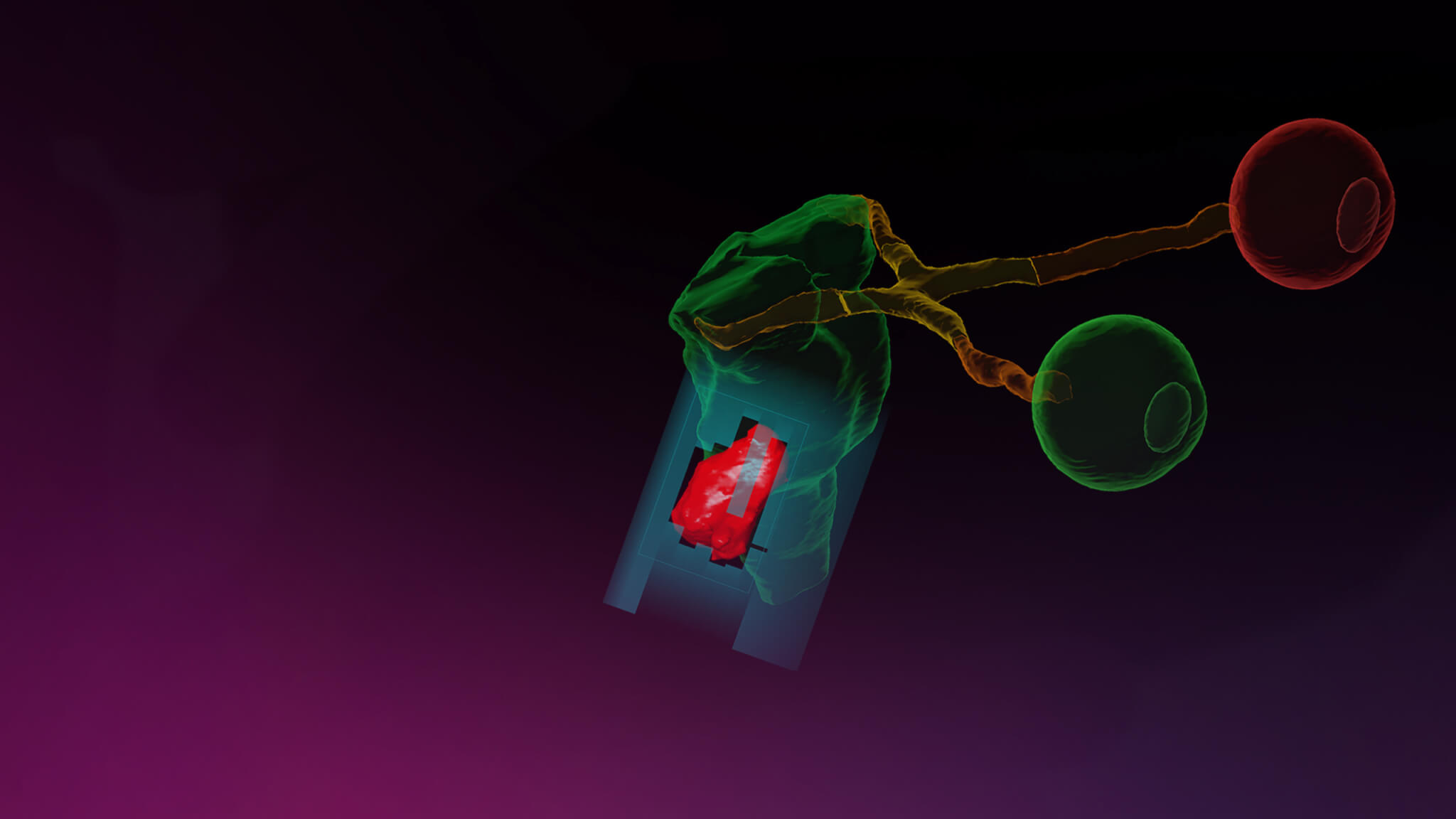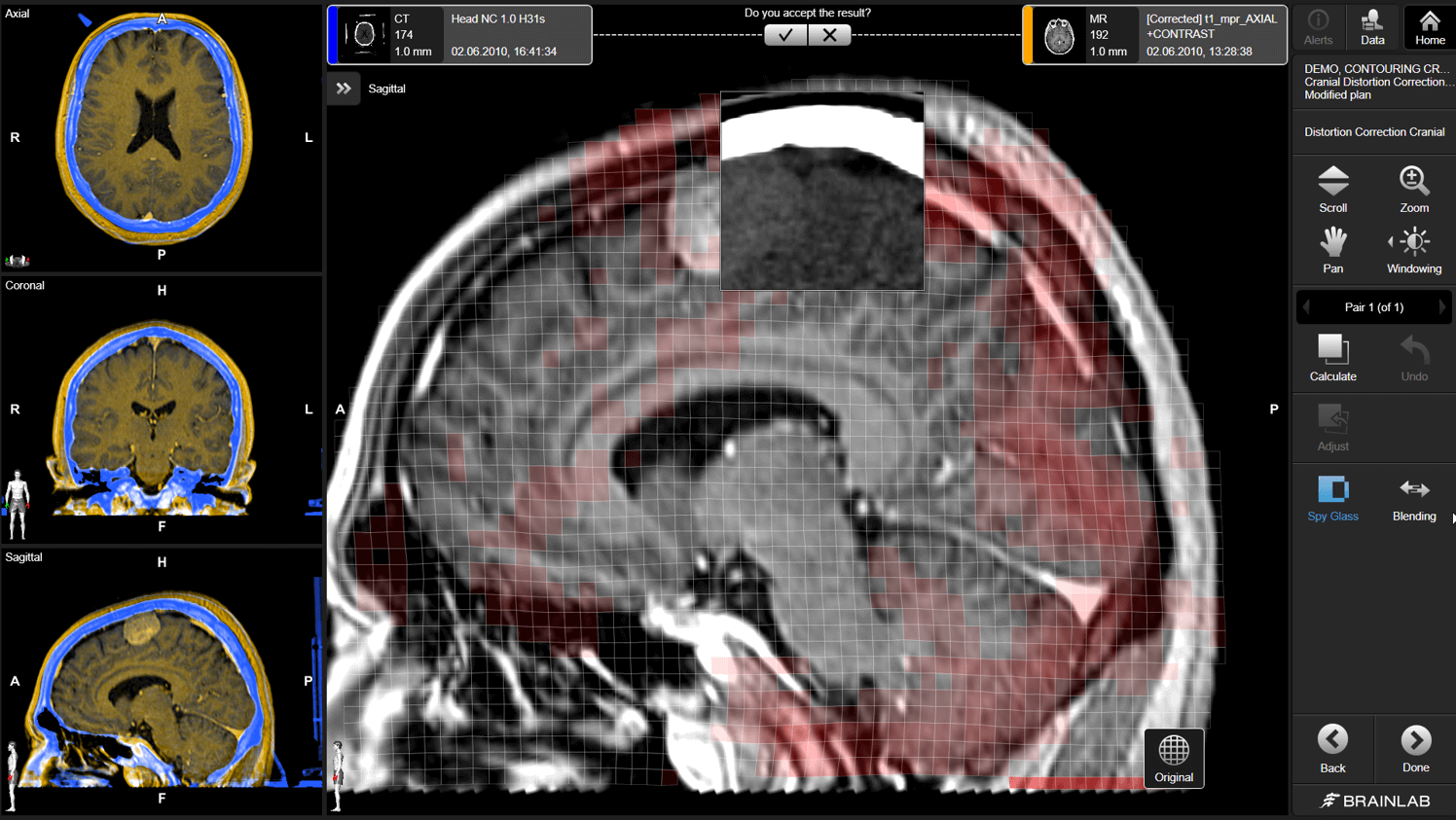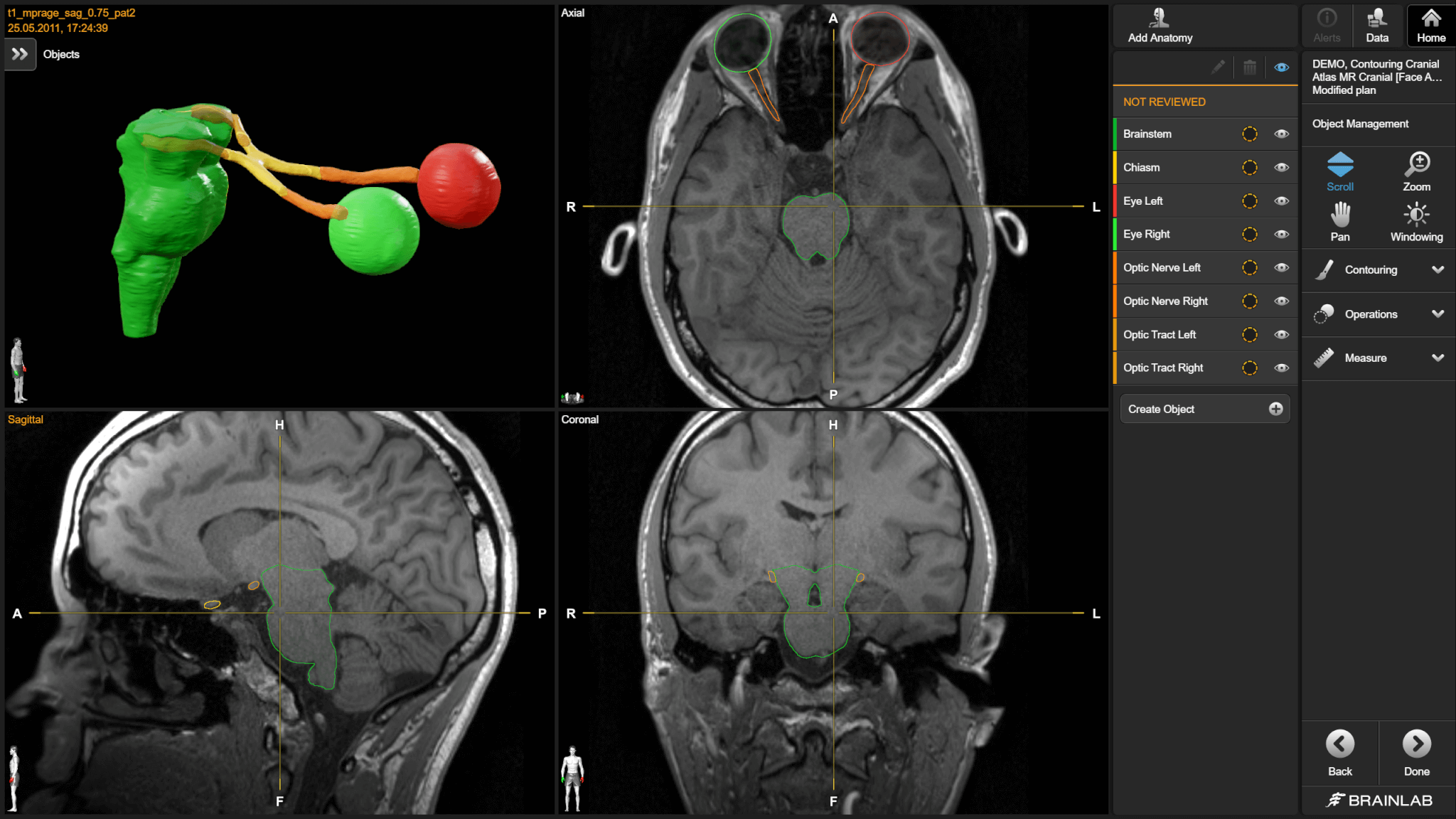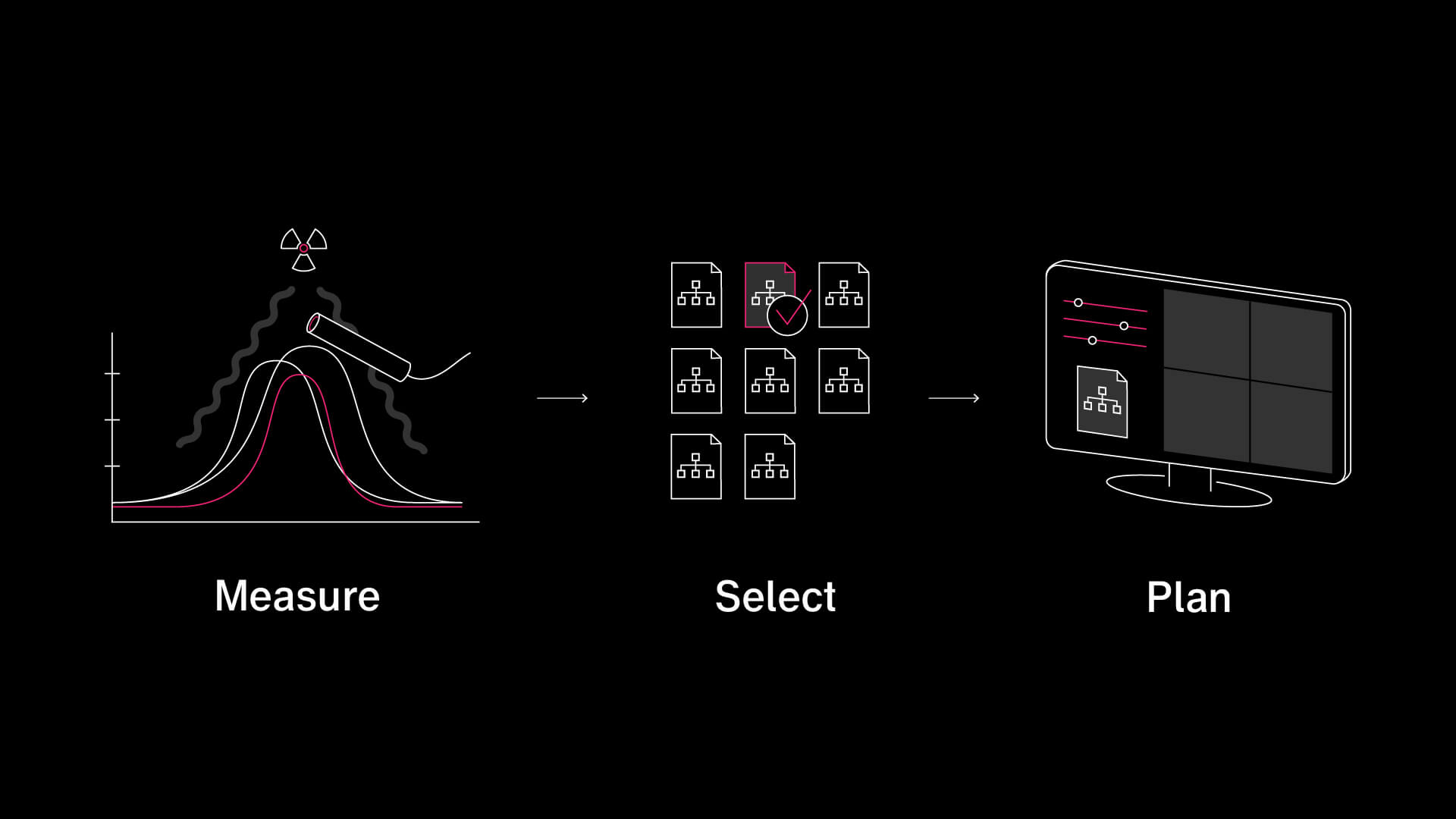Elements Solutions for Cranial SRS simplify complex planning routines for cranial indications, such as pituitary adenomas, vestibular schwannomas and arteriovenous malformations (AVMs). A dedicated 4Pi arc setup optimization and a VMAT algorithm designed for cranial radiosurgery provide improved plan quality and MU efficiency at the same time.
Add consistency to all your plans
Minimize intra- and inter-observer variability compared to manual outlining with our automation-supported tools. Ensure consistent, time-efficient image co-registration and segmentation of targets and organs at risk with RT Elements, forming a reliable foundation for creating high quality dose plans that fulfill defined treatment criteria.
Create high quality SRS VMAT plans
Elements Cranial SRS combines template-based treatment planning with a dedicated 4Pi arc setup optimization algorithm to ensure high quality treatment plans with minimized modulation for robust dosimetric results and MU efficiency.
Achieve submillimetric accuracy
Maintain low margins and treat with fewer fractions using Elements Cranial SRS in combination with ExacTrac Dynamic during treatment delivery. Improve patient experience and drive program throughput with Brainlab RT portfolio.
Get to know our indication-specific Elements
Create high-quality SRS plans easily and effectively for single cranial targets with protocol-based VMAT radiosurgery planning.
Elements Cranial SRS in 3 minutes
Preparing for cranial planning
We’ve built automation into every step of the pre-planning workflow, including image fusion, distortion correction, object outlining and segmentation. Save time with fast and easy-to-use tools, add consistency and gain confidence from the submillimetric accuracy you’ll achieve along the way.
Experience cranial SRS planning with Elements Radiosurgery Solutions
Creating the dose plan with Elements Cranial SRS
With pre-planning complete, dose planning with Elements Cranial SRS is the next step. Easily and effectively create consistent, high-quality SRS plans for single cranial targets with protocol-based VMAT radiosurgery planning.
Innovation isn’t often free, but our demos are
Find your future workflow today.
Source: ASTRO 2019 Novalis Circle Symposium: Initial Clinical Experience: Elements Multiple Brain Mets SRS
Source: Novalis Circle 2023: Elements Cranial SRS – 4Pi Optimisation case studies.




